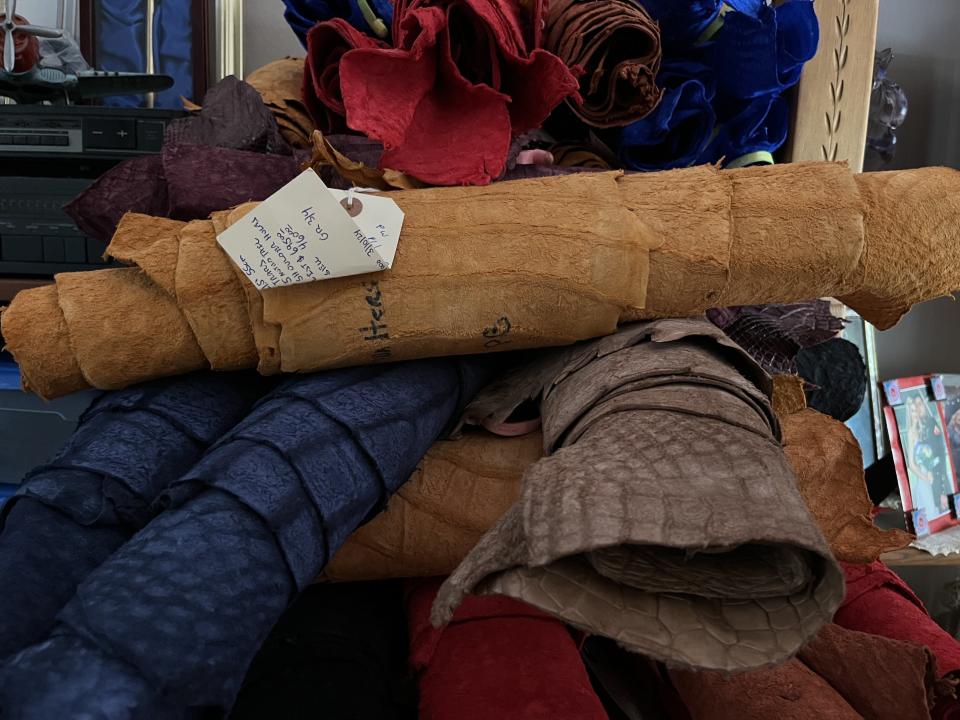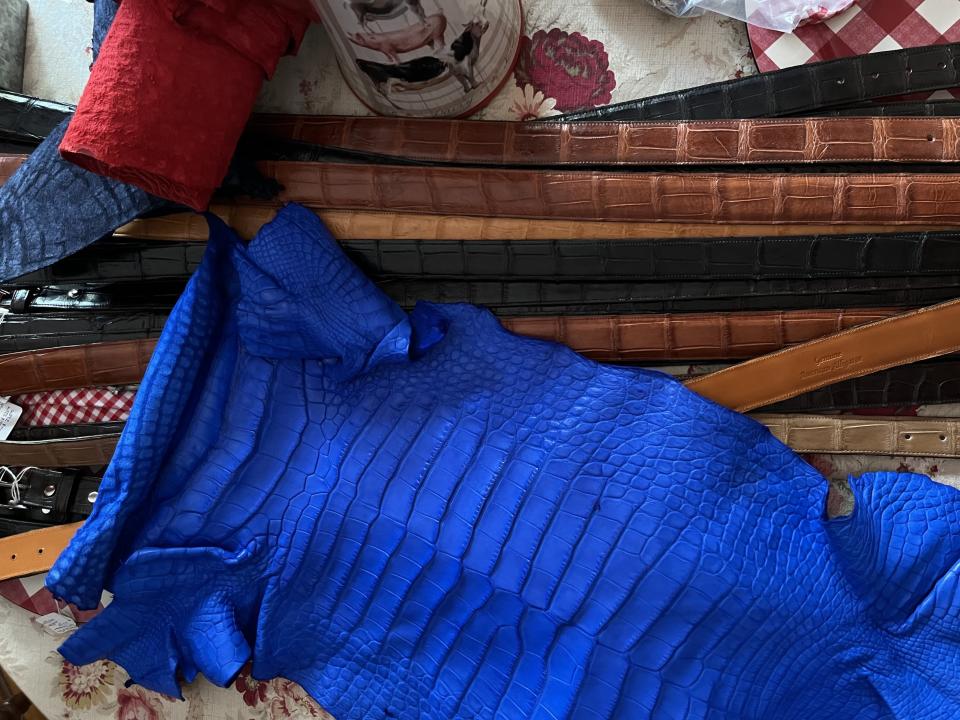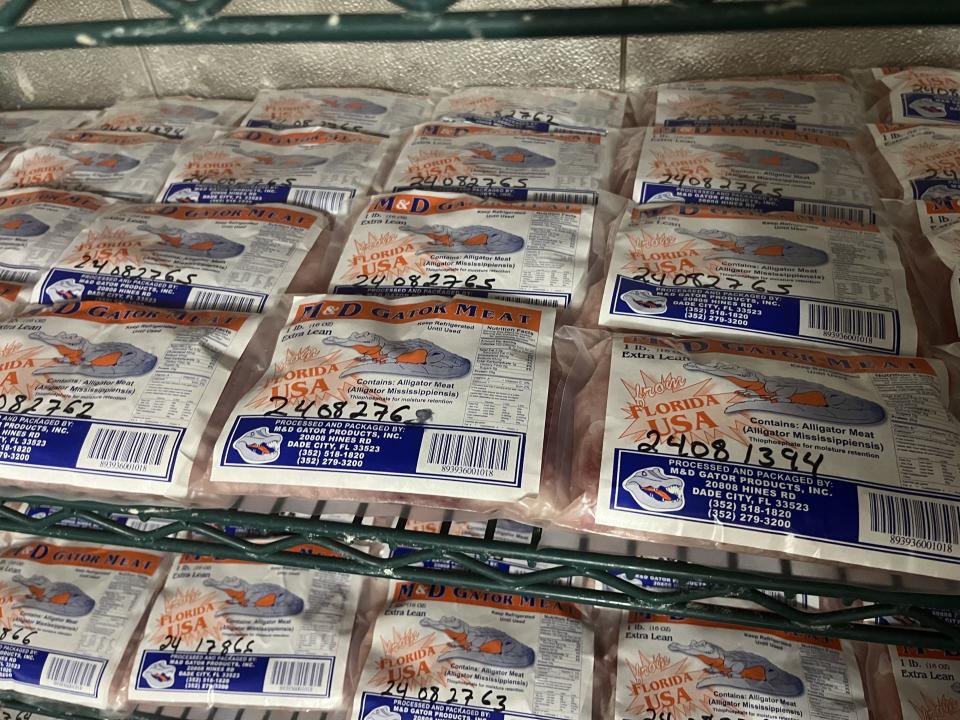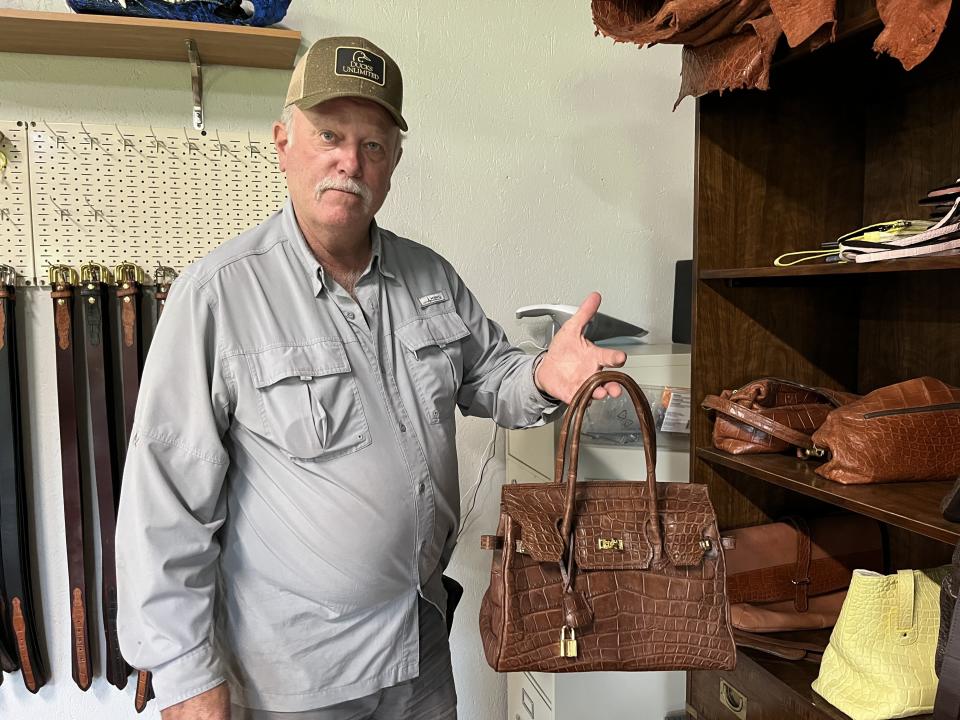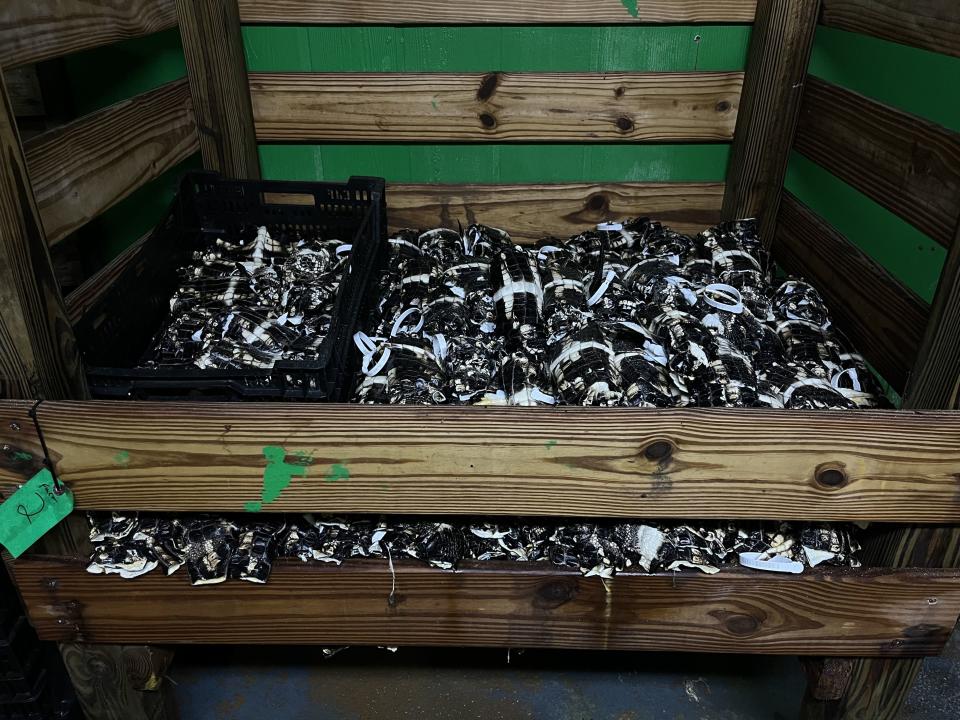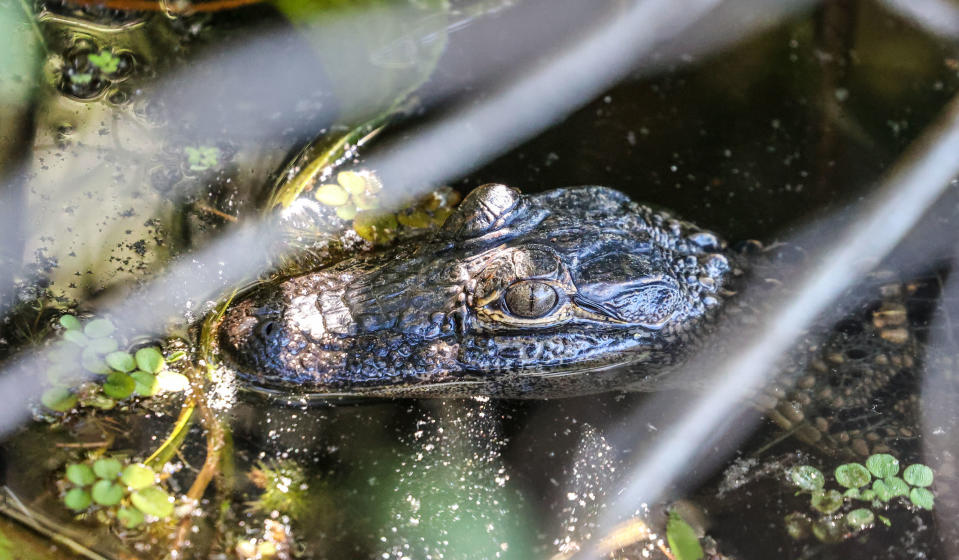Wild alligators are abundant in Florida. So why do we farm them?
You can farm tomatoes. You can farm fish. And in southern states, you can farm alligators.
Florida is one of a few states that farm the reptiles, which are the primary aquatic reptile aquaculture product in the state. Some gators are farmed for tourism, like zoos and parks. Some are farmed for meat, and some are farmed for hides.
Rearing gators from wild eggs to full size is complex and expensive. And when it comes to selling hides, fashion houses have monopolized the market, according to experts in the industry. Where does gator farming stand today? And how do local players in Tampa Bay fare?
First, a brief history
One of the first commercial alligator farms in Florida, St. Augustine Alligator Farm Zoological Park, opened over 130 years ago, and it’s still operating today. Since it was founded, the park’s sole focus has been tourism.
Since the founding of the first farms, alligator aquaculture has grown in popularity — not only for tourism, but also for hides and meat.
In the 1800s, alligator skin was used for shoes and horse saddles, and the oil from the animals helped lubricate machinery, according to the Bureau of Seafood and Aquaculture Marketing. During the Civil War, hides were used for Confederate Army saddles and footwear. The industry took off when poor hunting regulations and a high-fashion global demand for skin skyrocketed, placing the American alligator on the endangered species list in 1967.
Farming played an “integral role” in meeting consumer demand and allowing wild populations to recover, according to the Florida Department of Agriculture and Consumer Services. The American alligator is no longer endangered, but the animals are protected by the Endangered Species Act due to their similarities to the American crocodile, which are endangered and illegal to kill.
In 2023, there were 95 licensed alligator farms, 21 of which were active, according to the Florida Fish and Wildlife Conservation Commission. That’s down from the state’s peak of 32 active farms in 1993, but up from a slump of 10 in 2014.
So, how do you farm alligators?
Alligator farmers grow the gators to whatever size the market is asking for, according to Mickey Fagan, owner of M&D Gator Products and former owner of Fagan Alligator Farm in Dade City.
If the skins are wanted for watch bands, the gators need to be between 4 and 4½ feet long. Purses? Seven to 8 feet long.
But first, a farmer needs gator eggs. Some farmers mate gators on their properties, and others collect hatchlings from the wild, but wild egg collection is the primary means for acquiring baby gators.
The state allows 35 permitted farmers the first opportunity to receive wild eggs collected from public waters. Fagan is one of them.
Egg collecting is a delicate business, according to Shirl Floyd, Fagan’s daughter, who helps run M&D Gator Products and Double F Custom Cuts, a meat processing facility.
Floyd said collecting was her favorite part about the farm before it closed after the pandemic.
“We’d be into water up to here,” she said, motioning to her chest. And she’d only bring a stick to sift through the swamp; the eggs are buried in nests along the banks of swamps and ponds and are extremely fragile.
Once gathered, the eggs are incubated at about 86 degrees Fahrenheit until they hatch, which takes about 65 days from when the eggs were laid. Alligator egg laying season starts in June and July, and they start hatching in mid-August through early September.
Some gator farms use human-made outdoor ponds, while some use enclosed ones. The water temperature is regulated so the gators never know what time of year it is; this keeps them active and eating so they continue to grow all year round, Fagan said. In the wild, alligators stop feeding when the weather drops below 70 degrees and become dormant below 55 degrees.
Rearing gators to full size is expensive, as it takes about 14 months for them to reach 4 feet. Feed alone used to cost Fagan $11,000 a month.
Once the alligator gets to full size, it’s killed and skinned. The meat gets processed and packaged — Fagan is one of 23 meat processors in the state — and the skin gets bought and sent off to a tanning facility. From there, it’s dyed, then turned into a variety of products from wallets to belts to purses.
Demand for farmed vs. wild gators
Phil Walters, captain of Gator Guides and one of seven licensed hide buyers in Florida, pointed to a rough patch on a wild blue-dyed skin on his table at his Hillsborough County home. A calcium deposit. He singled out a little knick on a red-dyed hide. A naturally occurring scar.
“The high-end people will probably say, ‘Nope, this hide’s gone,’” Walters said.
Fashion houses like Gucci, Prada and Louis Vuitton are looking for the perfect hide — one without any blemishes and with specific patterns on the skin, which accounts for about 30% of all hides, Walters said.
In the wild, you get what you get. Gators get into fights. Their skin is calcified. Their scars tell a story. But for an $85,000 Birkin bag, the story doesn’t sell; perfection does — and that’s what comes out of a gator farm.
The industry used to be dominated by family farms, and they’d make a good living by selling to the fashion houses. Then the fashion houses started buying farms to cut out the middlemen — and to set the market price.
In 2019, Heng Long International, a supplier for Louis Vuitton, bought Cypress Creek Farms in Starke.
For the 70% of hides that aren’t “perfect,” Walters wants to see a second-tier market emerge.
Without a strong second-tier market, meat processors who can’t sell their hides are putting them in crab traps or burying them in the dirt, Walters said.
Alligator farming today
Alligator zoos remain a top tourism attraction in the state. Gator bites are a must-try when visiting. And gator trappers are vital in keeping communities safe from the wild reptiles.
But in an atmosphere of shrinking farms and high-fashion dominance, where do gator farms’ futures lie?
“Most all those farms are controlled and owned in part, or majorly, by one of the fashion houses,” said Bill George, a Winter Haven alligator trapper, owner of G&B Gator Gear and a member of the state wildlife commission’s Alligator Technical Assistance Group. “The sad part is those farms are just sucking the resource off from the state of Florida,” George said.
The alligator farming hub is in Louisiana. And because the fashion houses own farms or parts of farms in Florida, they’re able to participate in the egg and hatchling collection programs and send Florida’s eggs out of state, generating very little revenue here, George said.
The majority of alligator revenue in the state comes from the public water alligator hunt, George said. The season runs from Aug. 15 through Nov. 8; it costs $272 for Florida residents to participate and $1,022 for nonresidents.
When it comes to alligator meat: “If you have it, you can sell it,” George said. “Alligator meat has been the one stable thing in the state of Florida.”
By the numbers
In 1977, there were four licensed alligator farms in the state. In 2023, there were 95, 21 of which were operational, according to the wildlife commission.
25,647 hides were produced in 2023. Peak hides produced — about 39,000 — were in years 2018-2020.
277,577 pounds of alligator meat were produced in 2022, with a value of $3.4 million. The value for hides in the same year was $5.9 million.
30 alligator farmers are permitted to participate in the hatchling, or baby alligator, collection program.
